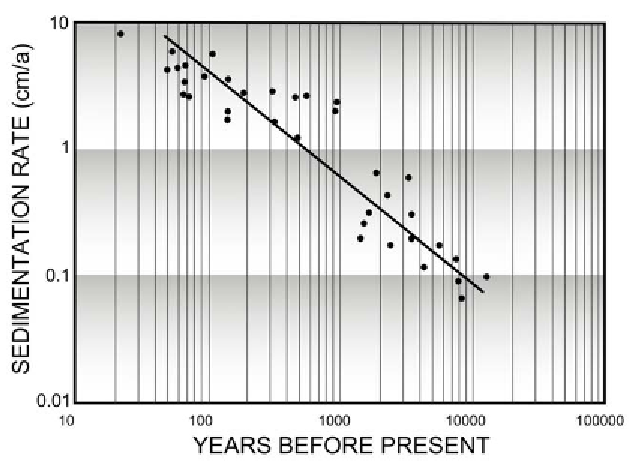Geography Reference
In-Depth Information
5.6.
Change in sedimentation rate in the Yellow R iver during the Holocene era based
on J. Xu, “Naturally and Anthropogenically Accelerated Sedimentation in the Lower
Yellow R iver, China, over the Past 13,000 Years,”
Geografiska Annaler. Series A, Physical
Geography
80 (1998): 67-78. Note the spectacular increase around the 1000 year bp
mark, which is the time of the Northern Song.
During the tenth and eleventh centuries, the loess plateau was among
the most intensively exploited new frontiers of the Song Empire. The
region lay astride the border between the territory of the Song Empire
and that of the Tangut Xi Xia, opponents in a lengthy rivalry and a four-
year war from 1040 to 1044. Soon after taking power in 960, the Song
commenced a massive garrison-building exercise and began to establish
new prefectures in the loess plateau as well (see figure 5.5). Moreover,
in a new innovation, officials called for garrisons to be populated by
soldier-farmers who would fund their occupation by tilling and grazing
on fragile loess soils.
25
New forts, garrisons, and farming regions were
established on both sides of the border. There was a rapid increase in
population and exposure of the fragile loess soils that lay beneath pri-
meval forests and grasslands.

